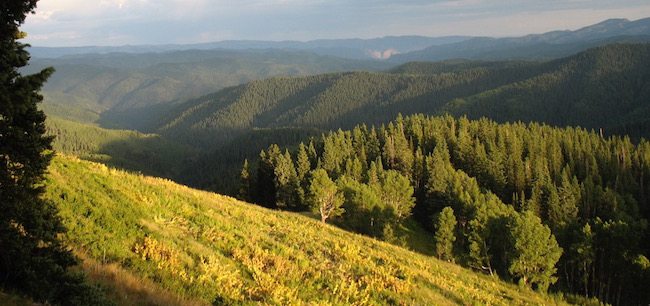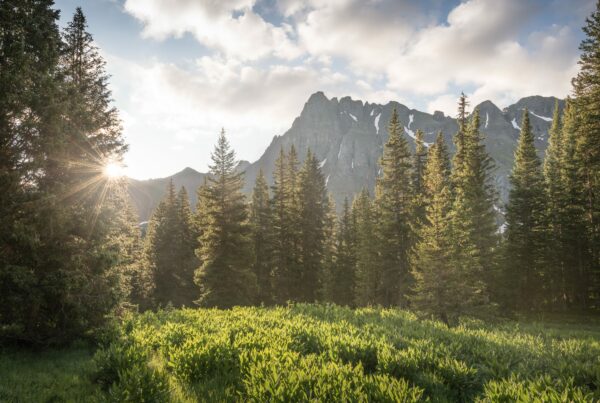Comments Due on the Hermosa Creek Watershed Management Plan
Didn’t we already do that?
Yes, yes we did! Dozens of stakeholders (including us) patiently and persistently carved out a proposal to protect the watershed that led to the Hermosa Creek Watershed Protection Act, signed into law nearly two years ago.
Now the Forest Service has created the Initial Draft for the Hermosa Creek Watershed Management Plan, which covers every realm of resource management for the watershed and closely follows the “purposes statement” of the legislation. The second section of the Initial Draft, also wraps in Hermosa specific travel management and recreation planning to integrate it with the overall Hermosa plan.
Sometimes the devil is in the details and laws are not always implemented with strong loyalty to their idealistic roots. Fortunately, that is decidedly not the case here.
There are, however, a few areas we would like improved, detailed below. Please take a read and then:
Submit your comments
1. Lengthen Seasonal Motorized-Use Trail Closure (Pages B 8-10)
Due to the well-documented higher impact of motorized use, San Juan National Forest (SJNF) trails are closed seasonally. The Managment Plan recommends trail closures for 4 to 5 months.
Because most Hermosa trails are still wet and snowy well into June and hunting season begins in late August, we recommend an October 1 through June 15th closure for motorized trail use for necessary resource protections:
- Elk and deer during calving and fawning
- Trails from inappopriate use during wet conditions
- Quiet use for fall hunting
2. Quiet Use Trails
The legislation that designated this protected area included a blueprint for trail designations throughout the 108,000 acre region and this draft adheres quite tightly to that original vision. The draft plan does, however, recommend a small shift toward an increase in motorized trail mileage. If you are a proponent of quiet use trails as a hiker, mountain biker, equestrian, hunter, angler or forager, etc. we ask that you let the Forest Service know your preference for non-motorized trail designations and why it is important to you.
3. Over-Snow Motorized Travel
This is often a controversial issue in areas where potential user conflicts exist between quiet and motorized users. Most of the northern region of the Special Management Area is zoned in the Initial Draft as open to over-snow motorized travel as indicated by the map on page 19. If you are a backcountry or cross-country skier and/or a snowshoer concerned that trails or areas you have traveled in the past that may become zoned for snowmobile use, let the Forest service know of your concerns. Be specific with your comment including area/trails specifics, type of use, and other details. If for example you are interested in a quiet locale for a ski tour up Cascade Creek from Highway 550 then let them know!
4. Hunting and Angling
If you hunt and/or fish you might want to weigh in on management goals and actions that support these activities. Though Colorado Parks and Wildlife “manages” species engaged by hunters and anglers, the Forest Service manages the habitat and their management priorities are critical to sportsmen. While the plan details measures to support and enhance the Colorado cutthroat population and in general to maintain or even improve water quality, the plan has no mention of hunters or hunting – very disconcerting, especially considering the widespread support shown from sportsmen for the Hermosa legislation.
SJCA recommends that the Forest Service take specific measures to support wildlife and the hunting community by:
- Instituting a robust seasonal closure for motorized trail use that will protect elk and deer in the spring and decrease motorized trail travel disturbance during the hunting season – as mentioned previously we recommend a motorized trail closure from October 1 to June 15 (open June 16 – September 30).
- Also, in your comments we suggest that you recommend that no additional motorized trails be added to the Hermosa trail system and that all roads not needed for public or administrative use should be closed and decommissioned.
5. Other Topics of Interest:
- Fossil fuel leasing and development is prohibited in the Hermosa watershed
- Hardrock mining is restricted to a 2,400 acre zone
- Timber harvesting is allowed only as an element of forest and ecological restoration
- Grazing is allowed as entitled before the Hermosa legislation
- Scenic and visual heritage will be enhanced through additional acreage being anointed with the “Very High” designation
- Road construction is prohibited in virtually all situations
Please contact Jimbo Buickerood, SJCA Lands and Forest Protection Manager, with any questions, suggestions, concerns or other issues related to the management plan.
jimbo@sanjuancitizens.org
970.259.3583 Ext.2
Submit your comments
See our Hermosa Creek Page




My specific comments of what I would like to see in the Hermosa Creek Watershed Management Plan:
1. No additional mileage for motorized trail use.
There is no benefit and only harm to the land and quiet trail users by permiting motorized trail usage. I have experienced the noise and ripping up of the trail by these users first hand. However, I accept that motorized user have rights to access this public land, I just desire to minimize the damage to the trails and the quiet experience of the forest.
2. Motorized trail closure from Sept 1 thru June 15 of each year.
The the highest quality elk hunts of the year are Archery and Muzzle Loader, as elk go into rut during these seasons. Also, the forest begins it’s color show. So simply to be in a quiet forest with the sights and aromas of turning quaky leaves is a rewarding experience, tag filled or not.
3. Grazing is allowed as entitled before the Hermosa legislation.
I want to go on record as being against grazing permits being issued.
Livestock damages springs by stomping them closed, and in the dry season turning the springs into a smelly licorice colored urine pool. These spring are essential to wildlife. Livestock cause stream side erosion, and pollute the the stream with cow manure and cow urine. Special care will be require to try and protect the native cutthroat being re-introduced to Hermosa Creek. The grazing program is a subsidy paid for by us taxpayers. The last GAO Study in 2004 showed a ($115,000,000) loss to the Dept. of agriculture just to administer the grazing program..
I do not want to pay for Cowboy Welfare.
Thanks for this opportunity